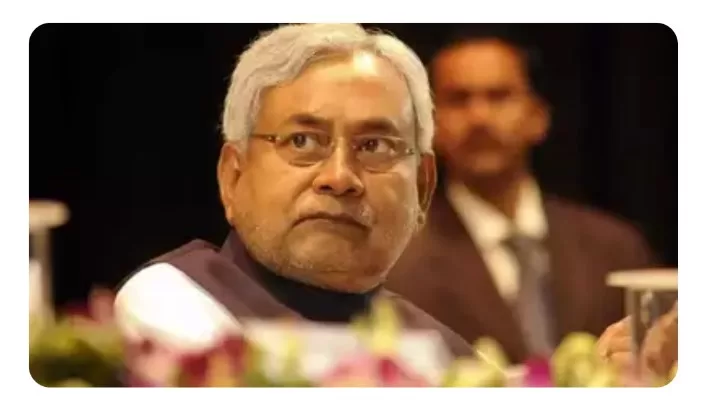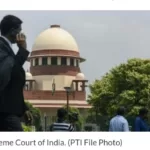New Delhi: The second segment of Bihar’s caste-based survey has brought to light concerning economic disparities in the state. Shockingly, it reveals that a significant 34 percent of households in Bihar struggle to make ends meet, with their monthly earnings falling below the meager sum of Rs 6,000. Disturbingly, a staggering 42 percent of households belonging to Scheduled Castes and Scheduled Tribes are mired in poverty, painting a bleak picture of financial inequality.
This revelation is particularly alarming considering that only 5.76 percent of Scheduled Castes have completed their education up to Class 11 and Class 12. Even when expanded to include all communities, this number only sees a marginal increase to a mere nine percent, significantly lower than the six percent reported in a 2017/18 National Statistical Office study.
These disconcerting statistics were presented in the Assembly, drawing attention to the economic condition of 215 Scheduled Castes, Scheduled Tribes, Backward Classes, and Extremely Backward Classes.
This report surfaces amid allegations by Union Home Minister Amit Shah that the Bihar government inflated the population figures of the Yadav and Muslim communities. In response, Deputy Chief Minister Tejashwi Yadav and Parliamentary Affairs Minister Vijay Kumar Chaudhary vehemently refuted these claims.
The first installment of data from the survey, released last month, revealed that over 60 percent of Bihar’s population belongs to Backward or Extremely Backward Classes, with more than 20 percent originating from Scheduled Castes or Scheduled Tribes.
The Economic Landscape:
The comprehensive report released by the Bihar government underscores the gravity of the economic situation.
It reveals that an alarming 34.13 percent of households in the state struggle to make ends meet with monthly incomes not exceeding Rs 6,000. A significant 29.61 percent manage on meager incomes of Rs 10,000 or less. The report further highlights that nearly 28 percent of households subsist on incomes between Rs 10,000 and Rs 50,000, leaving less than four percent earning above Rs 50,000 per month.
These disheartening findings come within the backdrop of Bihar’s population, where over 80 percent of individuals belong to marginalized communities and backward classes within a population exceeding 13.1 crore.
Poverty Statistics:
The data also exposes the stark reality of poverty distribution. Over 42.93 percent of families belonging to Scheduled Castes are living below the poverty line, along with 42.70 percent of Scheduled Tribes. Among Backward and Extremely Backward Classes, the statistics show that 33.16 percent and 33.58 percent are afflicted by poverty, respectively. Among other castes, 23.72 percent of families find themselves in the throes of poverty.
For the General Category, only 25.09 percent of families are categorized as poor. Within this category, 25.32 percent of Bhumihars, 25.3 percent of Brahmins, and 24.89 percent of Rajputs are listed as economically disadvantaged. It’s worth noting that Brahmins and Rajputs collectively constitute 7.11 percent of Bihar’s population, while Bhumihars account for 2.86 percent.
Among Backward Classes, the data indicates that 35.87 percent of Yadavs, the largest OBC sub-group, are economically distressed. Similarly, 34.32 percent of Kushwahas and 29.9 percent of Kurmis find themselves in the grip of poverty.
The Yadavs represent 14.26 percent of the state’s population, making them the most substantial OBC subgroup. Other OBC sub-groups collectively account for just over eight percent of the total population.
It’s notable that more than 30 percent of Extremely Backward Class families are grappling with poverty. This number stands at 29.87 percent among Telis, increasing to 32.99 percent for Kanus, 34.08 percent for Chandravanshis, 34.75 percent for Dhanuks, and a staggering 35.88 percent for Noniyas.
Educational Landscape:
The report also delves into the state’s literacy scenario, with an overall literacy rate of 79.7 percent. According to Mr. Chaudhary, the literacy rate is higher among women than men. In every 1,000 males, there are 953 literate females, marking an improvement from 918 in 2011.
However, only 22.67 percent of the respondents have completed their education up to Class 5. This number rises marginally to 24.31 percent for individuals from Scheduled Castes and 24.65 percent for those belonging to Extremely Backward Classes. In contrast, this figure stands at just 17.45 percent for the General Category.
Moreover, a mere 5.76 percent of the surveyed individuals from Scheduled Castes have attained an education level of Class 11 and 12, reflecting the pressing need for educational improvements in these communities.
Caste Census Advocacy:
These revelations have reignited the demand for a nationwide caste census, especially after the August survey in Bihar. The issue has gained political significance as it becomes a focal point in the lead-up to elections in five states—Chhattisgarh, Telangana, Rajasthan, Madhya Pradesh, and Mizoram this month, as well as the 2024 Lok Sabha elections.
Previously, the central government, led by the BJP, exhibited hesitance toward this demand. However, Union Home Minister Amit Shah recently indicated a potential shift in policy, expressing a willingness to consider the caste census following thorough examination.
In response to the initial Bihar data release, Prime Minister Narendra Modi voiced his concerns about those attempting to divide the country along caste lines. The Congress party has unequivocally supported the caste census and pledged to conduct surveys in states it secures victory in, and eventually, at the national level if it triumphs in the coming year.







